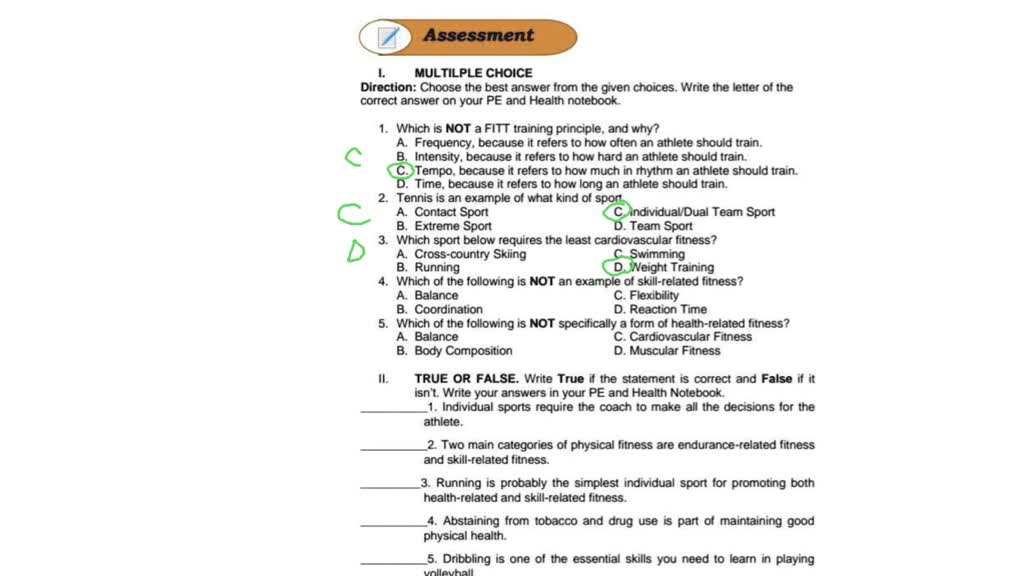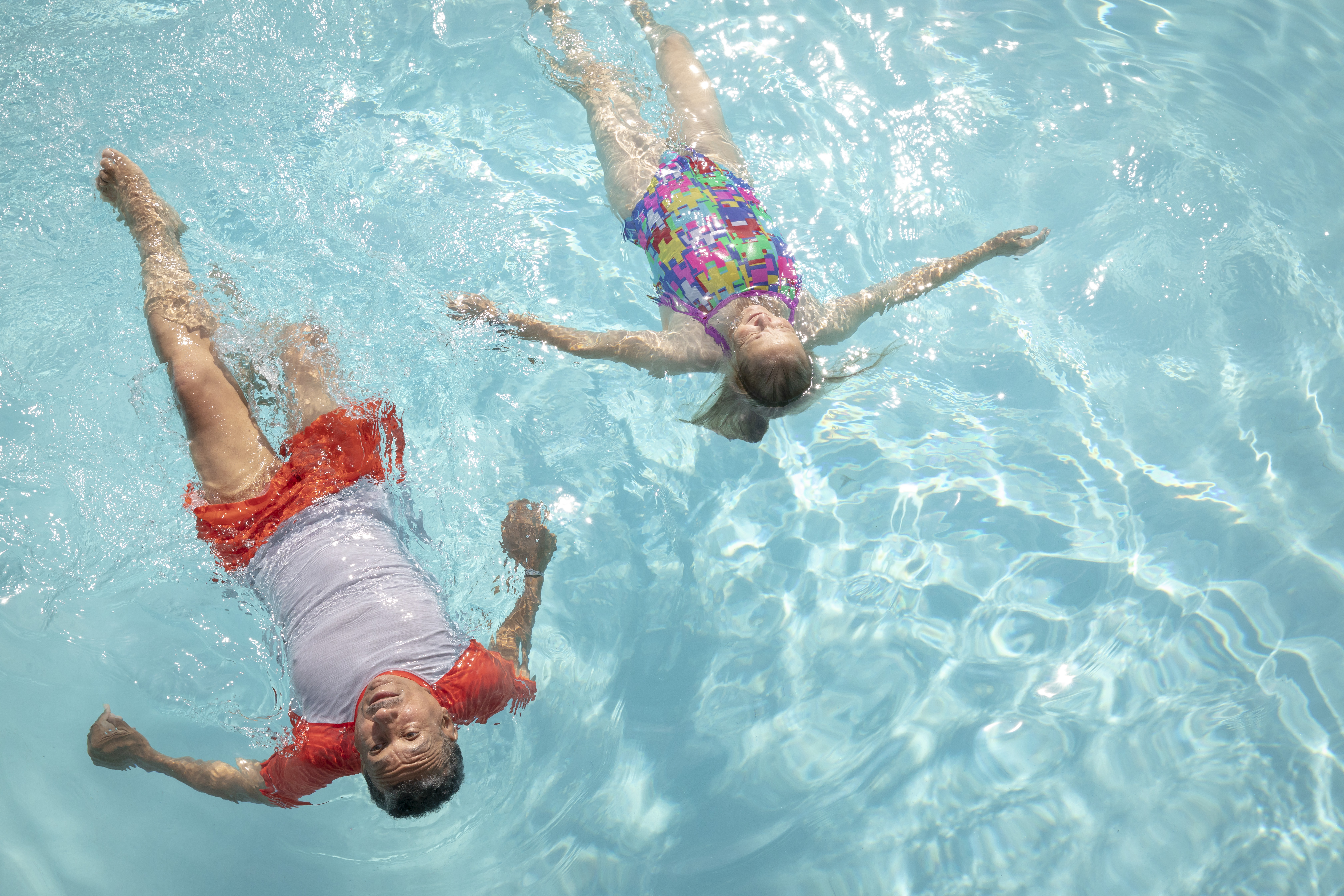Golf requires the least cardiovascular fitness among the sports listed. Unlike running or cycling, golf involves moderate walking and short bursts of activity.
Understanding the physical demands of various sports can help you choose one that fits your fitness level. Not everyone enjoys intense workouts that leave them breathless. Some sports offer a gentler approach, focusing more on skill and strategy than on cardiovascular endurance.
Golf, for example, allows players to enjoy the outdoors and engage in a low-impact activity. It’s perfect for those who prefer a leisurely pace. This blog post explores sports that require minimal cardiovascular fitness, helping you find a suitable and enjoyable option. Whether you seek relaxation or moderate exercise, there’s a sport for you.
Introduction To Low-cardio Sports
Sports can be a fantastic way to stay active and healthy. Some sports require a high level of cardiovascular fitness. But not all. If you prefer low-cardio sports, there are many options. These sports can still be fun and engaging. They are perfect for those who want to avoid intense cardio workouts. Let’s explore which sports fall into this category.
Defining Cardiovascular Fitness
Cardiovascular fitness refers to the ability of your heart and lungs. They work together to supply oxygen during physical activity. High cardio fitness means your body can sustain longer and intense exercises. This includes running, cycling, and swimming. It is a key component of overall physical health.
Importance Of Cardiovascular Fitness In Sports
Cardiovascular fitness is crucial in many sports. It helps athletes maintain stamina and endurance. Sports like soccer, basketball, and marathon running require high cardio levels. These sports involve continuous movement and high energy. Good cardiovascular fitness allows athletes to perform better and recover faster.
Golf: A Low-cardio Option
Golf is a popular sport known for its relaxed pace and strategic play. It offers a unique blend of physical activity and mental challenge. Unlike many high-intensity sports, golf does not require intense cardiovascular fitness. This makes it an excellent choice for those seeking a low-cardio option.
Physical Demands Of Golf
Golf involves walking, swinging, and carrying clubs. Players walk several miles during an 18-hole round. This provides moderate physical activity without high cardio demands. The sport also involves repetitive swinging motions. This helps improve flexibility and muscle strength. Carrying a golf bag adds a light resistance workout.
Benefits Of Playing Golf
Golf offers numerous physical and mental benefits. Walking the course improves overall fitness and aids weight management. The swinging motion enhances coordination and balance. Golf also provides a social aspect. It allows players to interact and bond with others. The sport helps reduce stress and improves mental well-being. It encourages outdoor activity, which boosts mood and energy levels.
Archery: Precision Over Endurance
Archery is a sport that values precision over cardiovascular endurance. Unlike many sports, archery focuses on steady hands and a calm mind. This makes it ideal for those seeking a less physically demanding activity.
Physical Requirements Of Archery
The physical demands of archery are minimal compared to other sports. Archers need steady hands and good posture. The primary muscles used are in the upper body, particularly the back, shoulders, and arms. There is no need for running or jumping.
Here is a breakdown of the physical requirements:
| Physical Requirement | Importance |
|---|---|
| Upper Body Strength | High |
| Cardiovascular Fitness | Low |
| Hand-Eye Coordination | High |
| Balance | Medium |
Mental Focus In Archery
Archery requires a high level of mental focus. Concentration is key. Archers must block out distractions and focus on their target. This mental discipline is crucial for accuracy.
Here are some mental skills that archery helps develop:
- Concentration
- Patience
- Stress Management
- Discipline
These skills can improve overall mental well-being. The sport encourages a calm and focused mind.

Credit: www.numerade.com
Bowling: Minimal Cardio Effort
Bowling is a sport that many people enjoy. It is accessible and fun. It also requires very little cardiovascular fitness. This makes it suitable for people of all ages and fitness levels.
Fitness Level Needed For Bowling
Bowling does not need much cardiovascular fitness. Players walk short distances and lift a ball. This means it is not very strenuous. Even beginners can play without feeling exhausted.
Here is a quick look at the physical demands of bowling:
| Activity | Physical Effort |
|---|---|
| Walking to the lane | Low |
| Lifting the ball | Medium |
| Rolling the ball | Low |
Social And Recreational Aspects
Bowling is also a great social activity. Friends and family can play together. The atmosphere is often relaxed and friendly. This makes it a great way to spend time with loved ones.
Here are some ways bowling can be enjoyed as a social activity:
- Team games
- Birthday parties
- Corporate events
People of all ages can participate. It is also a good way to meet new people. Many bowling alleys have leagues and tournaments. These events bring people together and create a sense of community.
Billiards: Skill-based Activity
Billiards stands out as a skill-based activity where physical exertion is minimal. Unlike sports that demand high cardiovascular fitness, billiards focuses on precision, strategy, and technique. It provides an excellent option for those who enjoy mental challenges without intense physical activity.
Physical Activity In Billiards
In billiards, players mostly stand or walk around the table. The primary physical movements involve bending and stretching to aim and shoot. This sport does not require running or jumping. Hence, it is less demanding on the heart and lungs.
Cognitive Skills In Billiards
Billiards requires sharp cognitive skills. Players need to plan their shots, anticipate their opponent’s moves, and strategize several steps ahead. This mental aspect makes billiards more about brainpower than physical power.
Good hand-eye coordination is essential in billiards. Players must judge distances accurately and control the cue stick with precision. This combination of mental and physical skills makes billiards unique and engaging.
:max_bytes(150000):strip_icc()/VWHealth-Beginner-friendly-workouts-v2-e842304bce1649f8926b39fa8814682c.jpg)
Credit: www.verywellhealth.com
Darts: Low-intensity Sport
Darts is a sport that requires the least cardiovascular fitness. Players primarily need accuracy, focus, and steady hands. This makes it a low-intensity activity.
Darts is a sport that requires skill rather than physical strength. Many people enjoy it for its relaxed pace. Unlike running or swimming, it does not demand high cardiovascular fitness.
Physical Exertion In Darts
Darts involves minimal physical exertion. Players stand in one place and throw darts at a board. There is no running, jumping, or heavy lifting involved. The heart rate stays steady and low.
Concentration And Precision
While darts is low in physical activity, it demands high concentration. Players need to focus on their aim and precision. Each throw requires careful calculation and steady hands. Mental sharpness is key to success in darts. “`
Comparing Cardiovascular Requirements
Cardiovascular fitness is key in many sports. It measures how well your heart and lungs work together. Different sports need different levels of cardiovascular fitness. Some sports demand more, some less. Let’s explore the physical demands of various sports.
Analysis Of Physical Demands
Every sport has its own physical demands. Running and swimming need high cardiovascular fitness. These sports require constant movement. Your heart and lungs work harder. This increases stamina and endurance.
Other sports have different needs. For example, weightlifting focuses on strength. Golf requires precision and concentration. These sports do not need as much cardiovascular fitness. The level of physical demand varies widely.
Which Sport Requires The Least Cardio?
Some sports need very little cardiovascular fitness. Archery is one such sport. It focuses on precision, not endurance. The physical activity is minimal. The main challenge is steadying your hand and aiming.
Another example is bowling. Bowling involves short bursts of activity. You walk a few steps and throw the ball. This does not put much strain on your heart and lungs. The cardiovascular demand is low.
Another sport that requires minimal cardio is billiards. It is more about skill and strategy. The movements are slow and deliberate. Your heart rate stays steady. The physical exertion is minimal.

Credit: pgparks.com
Conclusion And Final Thoughts
Choosing a sport that matches your fitness level can enhance your experience and performance. Understanding which sport requires the least cardiovascular fitness can be beneficial for those with specific health conditions or preferences.
Summary Of Findings
Among the various sports, some require less cardiovascular fitness. These sports can be ideal for those who prefer less intense physical activity. Let’s summarize the findings:
- Golf: Involves walking and swinging, but minimal cardiovascular demand.
- Bowling: Requires precision and control, but low on cardiovascular fitness.
- Billiards/Pool: Focuses on strategy and skill, not physical exertion.
These sports provide recreational fun without straining your cardiovascular system. They are perfect for individuals seeking low-impact activities.
Choosing The Right Sport For You
Selecting the right sport involves considering your fitness level and interests. Here are some tips to help you decide:
- Evaluate your current health and fitness status.
- Identify your interests and what you enjoy doing.
- Consider the time and resources available for the sport.
Choosing a sport that aligns with your lifestyle and fitness goals can lead to a more enjoyable and sustainable activity. Remember, the key is to stay active and have fun while maintaining your health.
Frequently Asked Questions
What Sport Requires The Least Cardiovascular Fitness?
Golf requires the least cardiovascular fitness. It involves walking, swinging, and minimal physical exertion compared to other sports.
Is Golf Low In Cardiovascular Fitness?
Yes, golf is low in cardiovascular fitness. The sport mainly involves walking and swinging, requiring less cardiovascular effort.
Why Is Golf Less Demanding On Cardio?
Golf is less demanding on cardio because it involves moderate walking and less intense physical activity.
Can I Play Golf With Low Cardiovascular Fitness?
Yes, you can play golf with low cardiovascular fitness. The sport is less physically demanding compared to others.
Conclusion
Choosing a sport with lower cardiovascular demands can benefit many people. Activities like golf or bowling offer less intense workouts. These sports still promote physical activity and fun. They suit individuals with varying fitness levels. Prioritize enjoyment and consistency in your chosen sport.
Stay active and healthy while enjoying the game.



